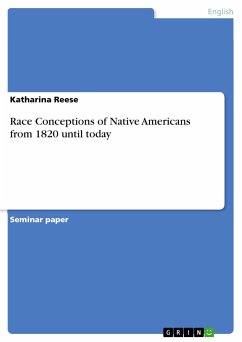Seminar paper from the year 2009 in the subject American Studies - Culture and Applied Geography, grade: 1,3, Free University of Berlin (John-F. Kennedy-Institut für Nordamerikastudien), course: Ethnic (Post) Modernism and the Invention of Ethnicity, language: English, abstract: These introductory words, printed in the appendix of the novel itself, give a very clear and critical insight into the topic of Black Elk Speaks by author John G. Neihardt. Largely considered to be an autobiographical narration, it has become one of the most famous books dealing with the story of individuals of Native American origin. Following the tradition of so-called „as-told-to‟ stories (Georgi-Findlay 1997, 385), it is the story of the Lakota holy man Black Elk, who told it to the author John G. Neihardt who transcribed it and wrote it down. The story, and its categorization as autobiographical, claims authenticity, and was widely regarded to be an accurate report of Native American life among the tribe of the Oglala Lakota and their culture. Even today, the book is still considered to be one of the first works of Native American literature. (As a matter of fact, the book is listed in the chapter “Indianerliteratur” (Native American Literature) in Hubert Zapf‟s “Amerikanische Literaturgeschichte”.) Even though it was written down and published by a person of Euro-American background, the story itself is considered to be uniquely Native American in content. But how authentic is the story, how much of what Neihardt wrote down was fact, and what was actually his own interpretation or even literary freedom that he took to serve certain stereotypes and make the story more appealing for the audience which it was aimed at?









